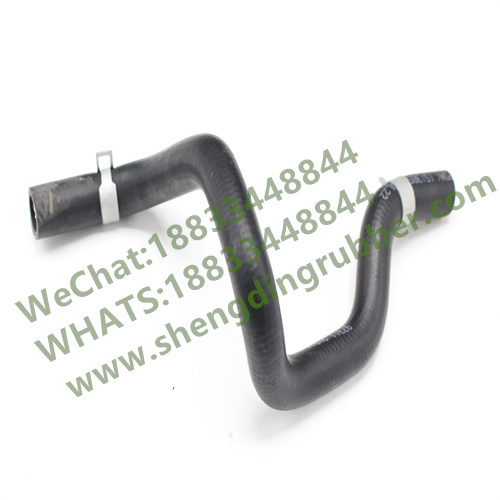Unlocking the Secrets of 24589673: Your Ultimate Guide to Automotive Electronics
Release Time:
Aug 28,2025
Unlocking the Secrets of 24589673: Your Ultimate Guide to Automotive Electronics Table of Contents What is the 24589673? Understanding Automotive Electronics Key Components of Automotive Electronics Functions of Automotive Electronic Systems Diagnostic Tools for Automotive Electronics Common Issues and How to Fix Them The Future of Automotive Electronic
Unlocking the Secrets of 24589673: Your Ultimate Guide to Automotive Electronics
Table of Contents
- What is the 24589673?
- Understanding Automotive Electronics
- Key Components of Automotive Electronics
- Functions of Automotive Electronic Systems
- Diagnostic Tools for Automotive Electronics
- Common Issues and How to Fix Them
- The Future of Automotive Electronics
- Frequently Asked Questions
- Conclusion
What is the 24589673?
The 24589673 is a critical component within the realm of automotive electronics, primarily serving as an electronic control unit (ECU) used in various vehicles. This device is essential for managing multiple electrical systems, including engine management, transmission control, and even advanced driver-assistance systems (ADAS). Understanding the 24589673 gives automotive technicians and enthusiasts insight into optimizing vehicle performance and troubleshooting issues effectively.
Understanding Automotive Electronics
Automotive electronics encompass a wide range of electronic systems and components integrated into vehicles to enhance functionality, safety, and efficiency. The evolution of automotive technology has led to the incorporation of sophisticated electronics that facilitate communication between different vehicle systems. This field includes everything from sensors and actuators to complex control systems that respond to input from the driver.
Importance of Automotive Electronics
The significance of automotive electronics extends beyond mere convenience. Modern vehicles rely heavily on electronic systems for critical functions, including:
- **Engine Performance**: Electronics regulate air-fuel mixtures, ignition timing, and exhaust emissions, ensuring optimal engine performance.
- **Safety Features**: Systems like anti-lock braking systems (ABS) and electronic stability control (ESC) enhance vehicle safety and stability.
- **Infotainment Systems**: Automotive electronics provide entertainment and navigation solutions, enhancing the driving experience.
Key Components of Automotive Electronics
Automotive electronics consist of various components, each playing a vital role in vehicle operation. Here are some key elements:
1. Sensors
Sensors are integral to the functioning of automotive electronics, providing real-time data to the ECU. Common sensors include:
- **Oxygen Sensors**: Monitor the oxygen level in exhaust gases for optimal fuel efficiency.
- **Throttle Position Sensors**: Detect the position of the throttle to ensure accurate air intake.
2. Actuators
Actuators perform physical actions based on signals from the ECU. Common types include:
- **Fuel Injectors**: Control the amount of fuel injected into the engine.
- **Electric Motors**: Operate various components like windows and door locks.
3. Control Units
Control units like the 24589673 process input from sensors and execute commands to actuators. They are the brains behind the vehicle's electronic systems.
4. Wiring Harnesses
Wiring harnesses are crucial for connecting all electronic components, facilitating communication throughout the vehicle.
Functions of Automotive Electronic Systems
Automotive electronic systems serve multiple functions, allowing vehicles to operate smoothly and efficiently. Here are some of their primary roles:
1. Engine Management
The ECU governs the engine’s performance, optimizing fuel consumption and minimizing emissions. By assessing data from various sensors, it adjusts parameters to enhance efficiency.
2. Transmission Control
Modern vehicles utilize electronic control for automatic transmissions. The transmission control module (TCM) adjusts shifting patterns based on driving conditions, improving performance and fuel economy.
3. Safety Systems
Advanced safety systems rely on automotive electronics to function effectively. Features like adaptive cruise control, lane departure warnings, and automated braking depend on accurate data from sensors and timely responses from control units.
4. Comfort and Convenience Features
From automatic climate control to infotainment systems, automotive electronics enhance the driving experience by providing comfort and convenience features. These systems use a network of sensors and controllers to maintain optimal conditions within the vehicle.
Diagnostic Tools for Automotive Electronics
Troubleshooting automotive electronic systems can be complex, requiring specialized diagnostic tools. Here are some essential tools used by automotive technicians:
1. OBD-II Scanner
The On-Board Diagnostics II (OBD-II) scanner is essential for diagnosing issues within the vehicle's electronic systems. It connects to the vehicle's OBD-II port and retrieves error codes, helping technicians identify faults quickly.
2. Multimeter
A multimeter is a versatile tool used to measure voltage, current, and resistance within automotive electrical systems. It helps diagnose issues with wiring, sensors, and other electronic components.
3. Oscilloscope
An oscilloscope visually represents electrical signals, allowing technicians to analyze the performance of various electronic components in real time. This tool is particularly useful for diagnosing complex electronic issues.
Common Issues and How to Fix Them
Understanding common issues associated with automotive electronics can enhance vehicle maintenance and troubleshooting skills. Here are some frequent problems and their solutions:
1. Faulty Sensors
**Symptoms**: Check engine light illumination, poor fuel efficiency.
**Solution**: Use an OBD-II scanner to check for error codes and replace faulty sensors as needed.
2. Dead Battery
**Symptoms**: Vehicle won't start, electrical accessories fail to operate.
**Solution**: Test the battery voltage with a multimeter. If the voltage is low, consider charging or replacing the battery.
3. Wiring Issues
**Symptoms**: Intermittent electrical failures, short circuits.
**Solution**: Inspect wiring harnesses for damage or corrosion and repair or replace as necessary.
4. ECU Malfunctions
**Symptoms**: Unresponsive vehicle systems, erratic engine performance.
**Solution**: Reflash or replace the ECU based on diagnostic results.
The Future of Automotive Electronics
As technology continues to evolve, the future of automotive electronics looks promising. Key trends include:
1. Integration of Artificial Intelligence
AI is set to revolutionize automotive electronics by enabling more sophisticated decision-making processes within vehicles. This advancement will enhance safety features and improve overall driving experiences.
2. Increased Connectivity
The rise of connected vehicles will allow seamless communication between vehicles and external systems, improving traffic management and safety.
3. Enhanced Electric Vehicle Technologies
The shift towards electric vehicles (EVs) will drive innovation in automotive electronics, focusing on efficient energy management, battery technology, and charging systems.
Frequently Asked Questions
1. What is the purpose of the 24589673 in a vehicle?
The 24589673 functions as an electronic control unit that manages various electrical systems within the vehicle, optimizing performance and ensuring safety.
2. How do I diagnose problems with automotive electronics?
Utilize diagnostic tools such as OBD-II scanners and multimeters to identify issues within the electronic systems. Check for error codes and inspect wiring and components.
3. Can I repair automotive electronic issues myself?
While minor issues can be addressed with basic tools and knowledge, complex problems may require professional expertise to ensure proper diagnosis and repair.
4. What are the signs of a failing ECU?
Signs include erratic engine behavior, unresponsive vehicle systems, and persistent warning lights on the dashboard.
5. How can I improve the longevity of my vehicle's electronic systems?
Regular maintenance, including inspecting wiring and connections, using high-quality replacement parts, and addressing issues promptly, can significantly enhance the lifespan of automotive electronics.
Conclusion
Understanding the complexities of automotive electronics, particularly the 24589673, is essential for anyone looking to enhance their vehicle's performance and safety. This guide has provided a comprehensive overview of automotive electronic systems, their components, and functionalities. By familiarizing yourself with diagnostic tools and common issues, you can ensure your vehicle remains in optimal condition. As we move towards a future filled with advanced technologies, staying informed will be key to navigating the evolving landscape of automotive electronics.
Key words:
What Else Might You Learn?







